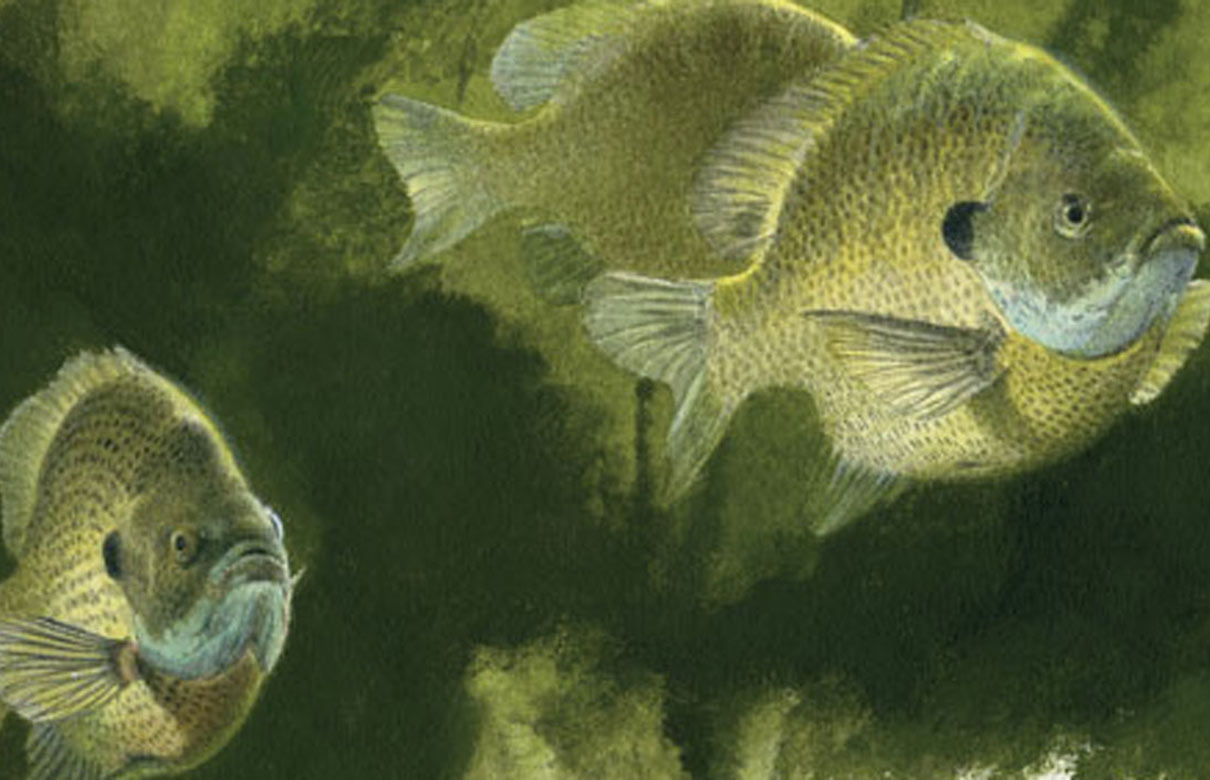Understanding Sunfish Spawning
By: Steve Quinn
 Male sunfish fan and protect nests containing thousands of eggs that hatch in several days at water temperatures in the mid-70s. Meanwhile, females move to deeper cover. (Photo courtesy of In-Fisherman.com)
Male sunfish fan and protect nests containing thousands of eggs that hatch in several days at water temperatures in the mid-70s. Meanwhile, females move to deeper cover. (Photo courtesy of In-Fisherman.com)
Understanding biological basics fosters fishing success. That mantra was one of the cornerstones of In-Fisherman philosophy that changed the world of fishing in the late 1970s. This approach continues to be particularly pertinent when it comes to finding and catching fish during the sunfish spawn.
Scientific observations of the timing and activities of sunfish species in various regions assist the process. Spawning in clear shallow water, they're a natural for fishwatchers, amateur and professional. And with planning and help from Mother Nature, you may catch the biggest fish of the year.
Bluegill Spawning Biology
Bluegills are the most widely distributed sunfish, thriving in waters large and small and coast to coast, since their popularity among eastern anglers led to western introductions in the late 1800s. In the southern fringe of their range in South Florida, bluegill may start spawning in late February as water temperatures rise toward 70 degrees. Populations farther north spawn progressively later, but at similar water temperatures.
READ THE FULL STORY ON IN-FISHERMAN